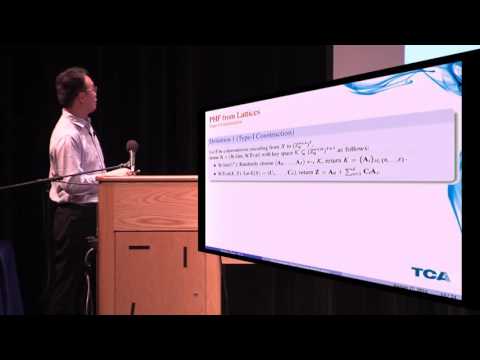Welcome to the resource topic for 2016/523
Title:
Programmable Hash Functions from Lattices: Short Signatures and IBEs with Small Key Sizes
Authors: Jiang Zhang, Yu Chen, Zhenfeng Zhang
Abstract:Driven by the open problem raised by Hofheinz and Kiltz (Journal of Cryptology, 2012), we study the formalization of lattice-based programmable hash function (PHF), and give two types of constructions by using several techniques such as a novel combination of cover-free sets and lattice trapdoors. Under the Inhomogeneous Small Integer Solution (ISIS) assumption, we show that any (non-trivial) lattice-based PHF is collision-resistant, which gives a direct application of this new primitive. We further demonstrate the power of lattice-based PHF by giving generic constructions of signature and identity-based encryption (IBE) in the standard model, which not only provide a way to unify several previous lattice-based schemes using the partitioning proof techniques, but also allow us to obtain a new short signature scheme and a new fully secure IBE scheme with keys consisting of a logarithmic number of matrices/vectors in the security parameter \kappa. Besides, we also give a refined way of combining two concrete PHFs to construct an improved short signature scheme with short verification keys from weaker assumptions. In particular, our methods depart from the confined guessing technique of Böhl et al. (Eurocrypt’13) that was used to construct previous standard model short signature schemes with short verification keys by Ducas and Micciancio (Crypto’14) and by Alperin-Sheriff (PKC’15), and allow us to achieve existential unforgeability against chosen message attacks (EUF-CMA) without resorting to chameleon hash functions.
ePrint: https://eprint.iacr.org/2016/523
Talk: https://www.youtube.com/watch?v=i54WP9R3YoA
See all topics related to this paper.
Feel free to post resources that are related to this paper below.
Example resources include: implementations, explanation materials, talks, slides, links to previous discussions on other websites.
For more information, see the rules for Resource Topics .
